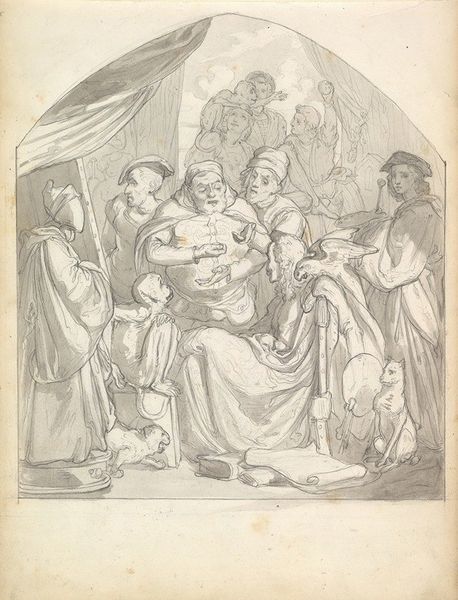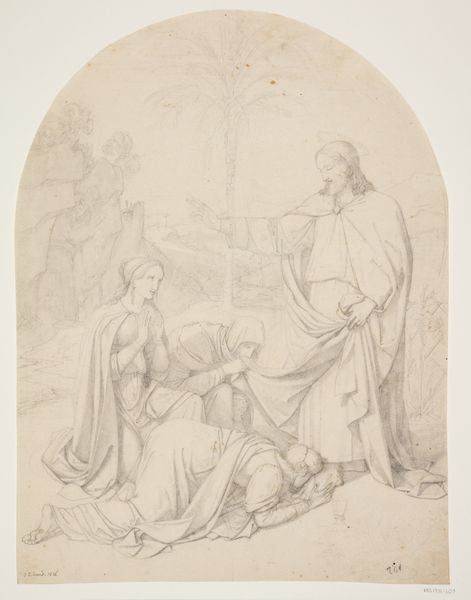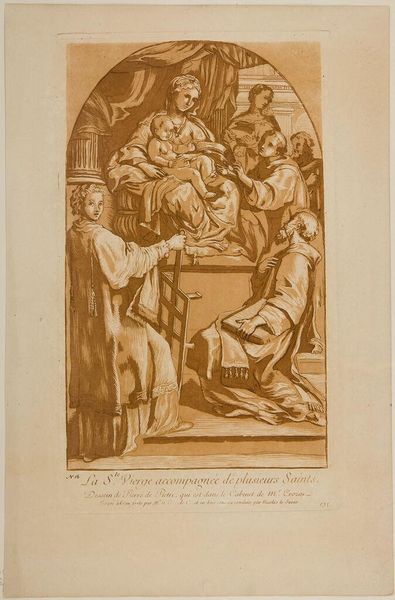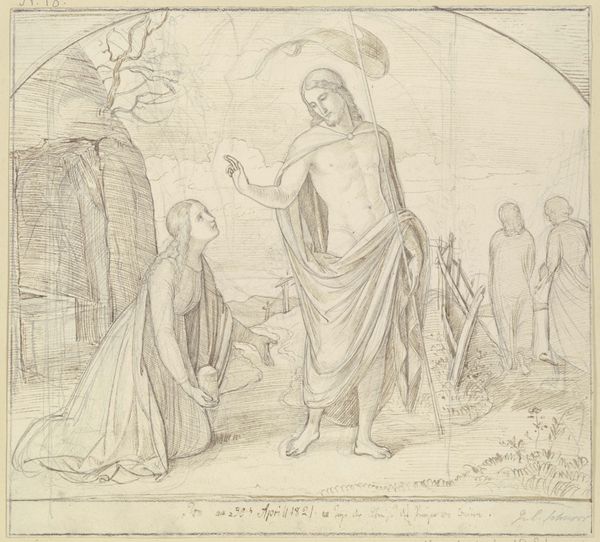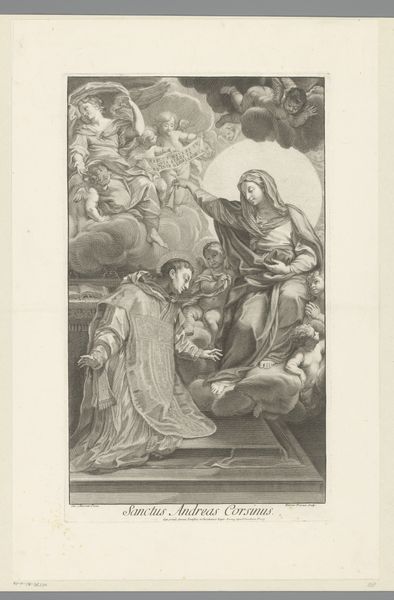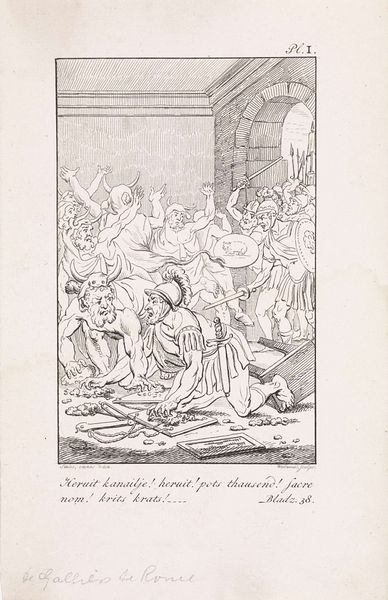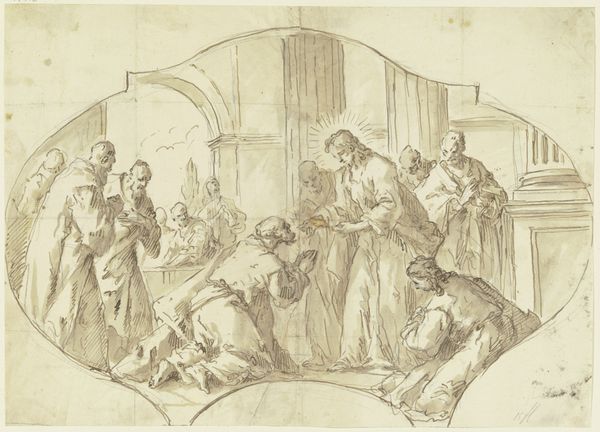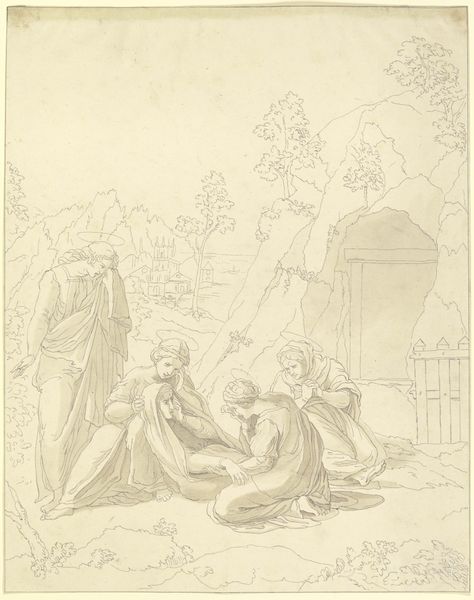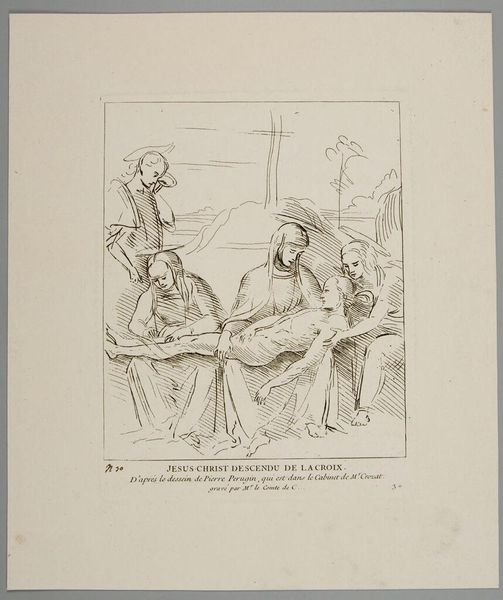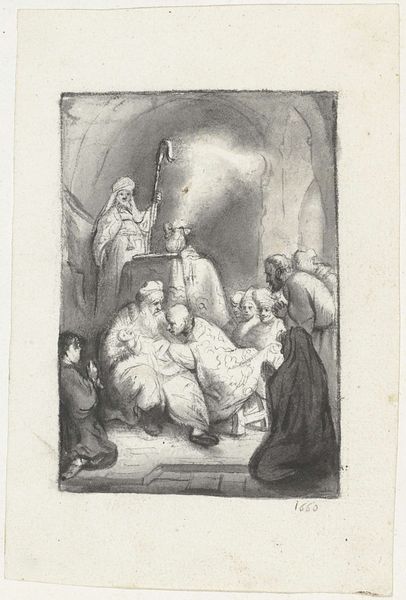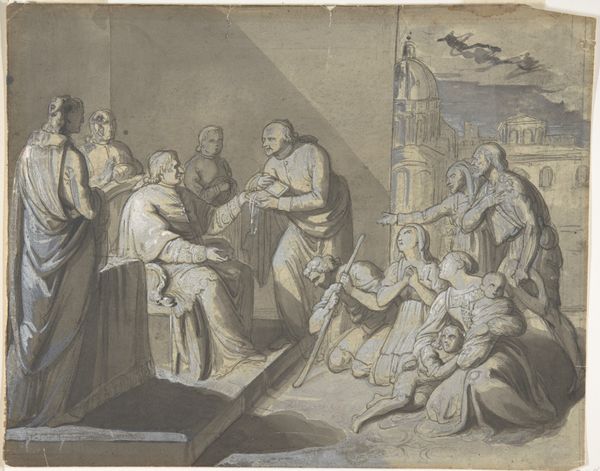
drawing, pencil
#
drawing
#
landscape
#
figuration
#
pencil
#
cityscape
#
academic-art
#
italian-renaissance
Copyright: Public Domain: Artvee
Curator: Look at this remarkable pencil drawing from around 1849, titled "Scene in an Italian City with Figures Near a Fountain" by Frederic Leighton. The Italian Renaissance influence is undeniable. Editor: Immediately, I'm struck by how this drawing conveys such a potent air of anticipation. The scene is lively but feels on the cusp of something, an unspoken tension maybe? Curator: Leighton's figures carry recognizable, if perhaps subconscious, echoes of Italian art. The central woman’s gesture, the stoic male figures – their visual cues harken back to iconic Renaissance frescoes and sculptural forms, tapping into our collective memory of that period. Editor: That gesture is commanding! To me, it disrupts the otherwise quite pastoral mood. The placement of the figures creates this sense of unease amidst the everyday bustling activity. It challenges the viewer, doesn’t it, questioning the established social order? Curator: Perhaps Leighton intended to depict not just a scene but an ideal, invoking the artistic and civic values associated with the Italian Renaissance. The fountain itself can be seen as a symbol of prosperity and civic pride. Editor: True. But who has access to that prosperity? Notice how Leighton sets her apart – draped in finery, almost a beacon, but surrounded by shadowed faces, folks whose expressions remain unknown? Even her clothing seems designed to both command respect, while further separating herself. The symbolism here speaks to contemporary concerns about social disparity and power dynamics. Curator: These scenes, steeped in classical influence, served to instill particular values. These representations offered a means to transmit cultural ideals and aspirations, and that includes, in many cases, civic order and morality, so tensions are probably naturally involved. Editor: Absolutely. And interpreting those ideals and challenging them is how we build toward a better reality. Even sketches from long ago open up dialogues, and I appreciate the invitation Leighton provides here to look closer, both at what we see and how we see it. Curator: Indeed. His meticulous depiction of an idealized past gives us tools to grapple with very human stories of history, class, gender and aspiration that still echo powerfully today.
Comments
No comments
Be the first to comment and join the conversation on the ultimate creative platform.
